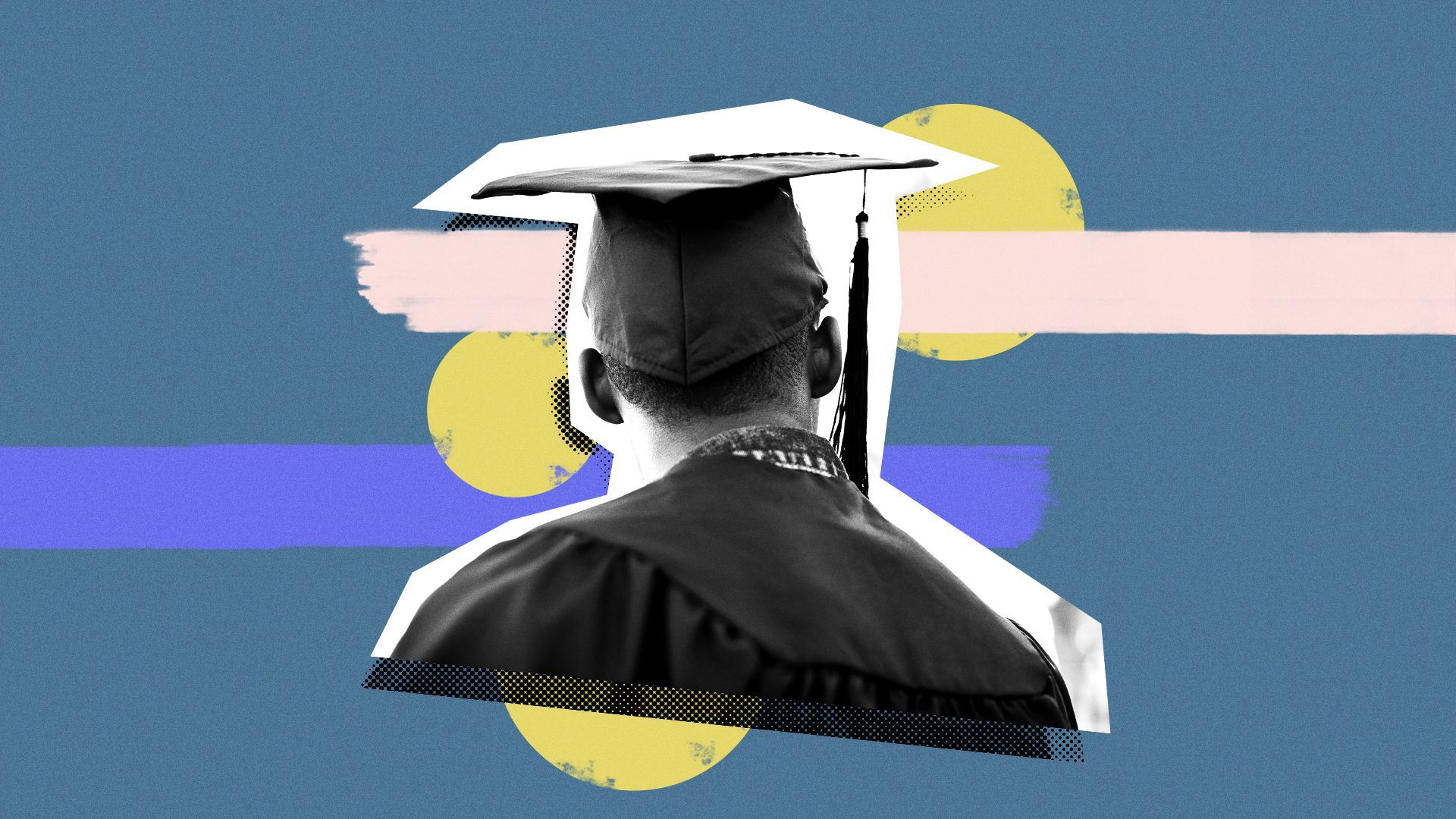Higher education's sea change
Illustration: Sarah Grillo/Axios
Enrollment is down, longstanding traditions are crumbling and applicant pools are changing dramatically.
The big picture: Higher education in the U.S. is in the midst of a sea change, forcing schools to adapt with the times.
- "It suggests that there’s a broader question about the value of college and particularly concerns about student debt and paying for college and potential labor market returns," Doug Shapiro, the executive director of the National Student Clearinghouse Research Center, said earlier this year, per the New York Times.
What's happening: College enrollment had been trending downward, and the pandemic accelerated the trend.
- The total number of undergraduate students in the U.S. dropped by nearly 10% during the pandemic, PBS NewsHour reports.
- A majority of academic administrators, nearly 90%, say they are concerned about future enrollment, per a survey by Bay View Analytics.
The stakes: The number of colleges closing over the last decade quadrupled compared with the prior decade, the Wall Street Journal reported.
- "The hot water gets hottest fastest for private institutions that aren’t among the most selective," says Nathan Grawe, an economist at Carleton College. They don't have large endowments or government funds to support them, like big-name universities and public schools do.
Colleges are responding to dropping enrollment by introducing hybrid and online learning options. And universities are trying to lower hurdles to admission during the pandemic by scrapping standardized testing requirements.
- More than 1,450 colleges and universities have permanently eliminated standardized tests or made them optional, according to data from FairTest, which advocates for limited use of standardized tests.
- Among those universities that have made standardized tests optional, many have seen increases in applications, especially among students of color and first-generation students.
- At Cornell University, for instance, applications rose 40% since the school made standardized tests optional — with the biggest increase coming from first-generation students, Bloomberg reports.
Between the lines: Another longstanding tradition of higher education— U.S. News' annual college rankings list — may also be wavering.
- Columbia University fell 16 places on the ranking list earlier this year, to a spot last seen in 1988, in a dramatic shakeup that may have punctured perceptions of the decades-old list.
- "That brought a lot more national attention to the weaknesses, the flaws, the foibles in the ranking system," Colin Diver, former president of Reed College, which does not participate in the rankings, told Axios after Columbia's fall.
State of play: The demographics of college students broadly have also shifted.
- Underrepresented minority applicants increased by 32% from 2019 to 2020, per Common App data out last month. First-generation applications increased by 43% during the same period.
- Hispanic enrollment in four-year institutions has jumped a whopping 287% between 2000 and 2020, reaching an all-time high, according to Pew.
- And there's a growing gender gap in college admissions, with women outnumbering men. There are about 130 women for every 100 men at four-year colleges, and the gap is even wider at two-year institutions, the St. Louis Fed notes.
Yes, but: Institutions are still far from closing the disparities in enrollment among historically underrepresented groups.
- At the current rate, it would take about 70 years for all not-for-profit institutions to reflect underrepresented students in their incoming student population, per analysis this year by McKinsey & Company.
What to watch: One group of institutions bucking the dropping enrollment trend is HBCUs. Applications to top-tier HBCUs jumped as much as 30% between 2018 and 2021, per PBS NewsHour.
Go deeper … Colleges are upending majors
Source: Read Full Article



